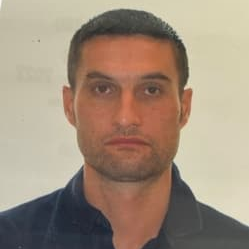New and Emerging Trends in Breast Imaging and Treatment
A special issue of Tomography (ISSN 2379-139X).
Deadline for manuscript submissions: closed (30 November 2022) | Viewed by 3589
Special Issue Editors
Interests: breast imaging; ultrasound; MRI; breast biopsies; machine learning; artificial intelligence
Interests: MRI advanced technique; breast implants imaging; tomosynthesis; health economics
Interests: Artificial intelligence; ultrasound; rapid diagnostic unit
Interests: outcomes analyses in clinical breast imaging and population-based studies; cost-effectiveness; delivery of care; predictive values; multimodality correlation; minimally invasive biopsy
Special Issue Information
Dear Colleagues,
Breast cancer is the most prevalent cancer diagnosed in women worldwide. It has a major impact on women’s physical and mental health.
In the past 25 years, significant advances in screening, diagnosis and treatment have improved the mortality rate for women with breast cancer, with some studies showing a drop of approximately 40%. Combined with the use of artificial intelligence, the rapid development of medical imaging, tomosynthesis, quality improvement of ultrasound probes, and emerging PET/MR will continue to contribute to better outcomes for women with breast cancer.
This Special Issue is intended to provide an overview of the development of the newest research on AI, machine learning, PET/MR and breast imaging. We encourage researchers to submit original studies, reviews, communications, case studies, and a series of new frontiers in the diagnosis, treatment, and management of breast diseases or even new prevention methods, new software in artificial intelligence or machine learning and deep learning.
Dr. Belinda Curpen
Dr. Anabel Scaranelo
Dr. Romuald Ferre
Dr. Jessica W. T. Leung
Guest Editors
Manuscript Submission Information
Manuscripts should be submitted online at www.mdpi.com by registering and logging in to this website. Once you are registered, click here to go to the submission form. Manuscripts can be submitted until the deadline. All submissions that pass pre-check are peer-reviewed. Accepted papers will be published continuously in the journal (as soon as accepted) and will be listed together on the special issue website. Research articles, review articles as well as short communications are invited. For planned papers, a title and short abstract (about 100 words) can be sent to the Editorial Office for announcement on this website.
Submitted manuscripts should not have been published previously, nor be under consideration for publication elsewhere (except conference proceedings papers). All manuscripts are thoroughly refereed through a single-blind peer-review process. A guide for authors and other relevant information for submission of manuscripts is available on the Instructions for Authors page. Tomography is an international peer-reviewed open access monthly journal published by MDPI.
Please visit the Instructions for Authors page before submitting a manuscript. The Article Processing Charge (APC) for publication in this open access journal is 2400 CHF (Swiss Francs). Submitted papers should be well formatted and use good English. Authors may use MDPI's English editing service prior to publication or during author revisions.
Keywords
- breast MRI
- radiomics
- AI
- segmentation
- breast cancer receptors









